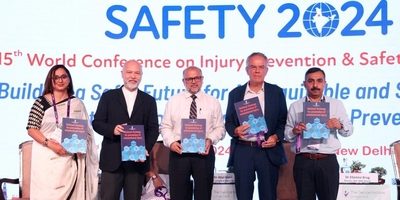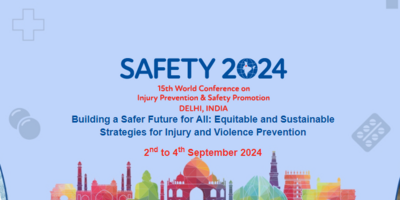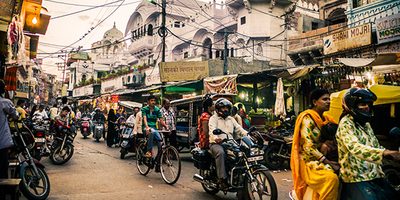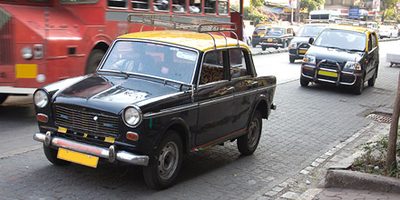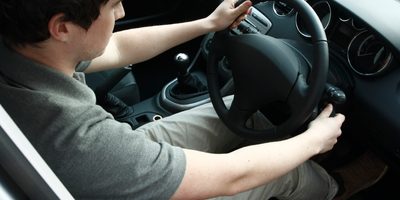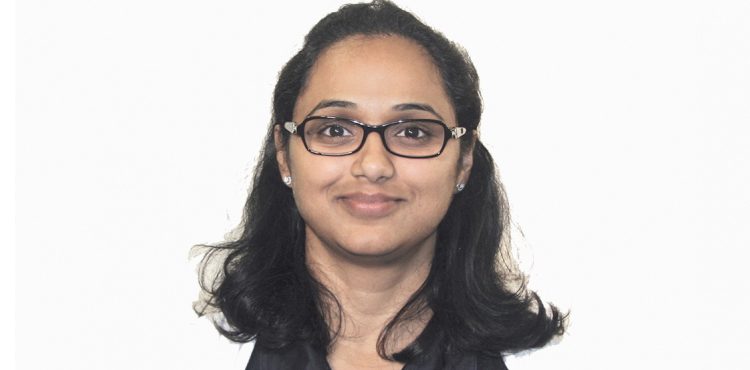
Dr. Jagnoor Jagnoor talks about road safety in India
Dr Jagnoor Jagnoor is head of our Injury Division, India. She leads a number of studies and projects related to road safety and injury in India, and across Asia, Africa and Australia. Dr. Jagnoor is an injury epidemiologist and holds a PhD in injury epidemiology from the University of Sydney.
She has a conjoint appointment as Senior Lecturer at School of Public Health and The John Walsh Centre for Rehabilitation Research. Dr. Jagnoor has published widely in the peer reviewed literature in the field of unintentional injuries
In this interview we talk to her on issues around road safety in India, the upcoming road safety week and planned events.
Q1. How does India compare to high income countries when it comes to Road injury prevention in terms of law enforcement, public awareness on road safety, vehicle regulations and road infrastructure. Do you have any data to share?
Dr Jagnoor: "Every year 1.25 million people die on the roads and many more are seriously injured. A new and ambitious target lies ahead of us: halving road traffic fatalities globally by 2020. Meeting this target, part of the Sustainable Development Goals – requires us to act fast and to learn from each other’s experiences, thereby improving our effectiveness and use of resources.
There are lessons we can certainly learn from countries such as Australia who have successfully reduced the road death toll by multiple measures over the years. Whilst the context might vary with respect to India, with mixed traffic, the graph below is a nice illustration of what needs to be done and the inter-sectoral approach needed to achieve the goal of road safety"
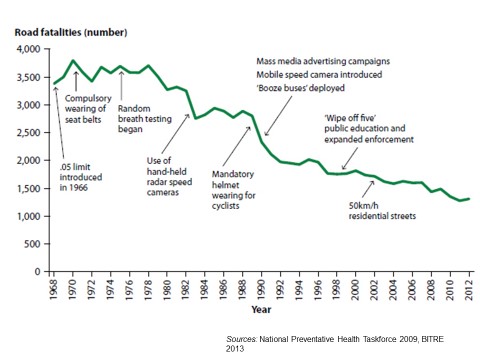
Q2. You lead a research to study the impacts of road traffic injury in Chandigarh in 2015. Can you share some key insights and findings from this study.
Dr. Jagnoor: "Yes, we conducted a study of 2200 people in three hospitals in North India with our collaborators Dr Shankar Prinja, from PGI, Chandigarh highlighting the health, social and economic burden of road injuries."
We found that 10% of people die post- discharge and that more than a third families experienced financial distress due to injuries.
It is the young economically productive age group that is highest at risk, 15-29 year olds.
It is estimated that the total cost of road injuries is 3% of India’s GDP, which is more than our entire health budget.
"We have also further contributed in evaluation of cashless insurance scheme on National Highways for crash victims and building a national injury surveillance system in India, in collaboration with WHO."
Q3. Do you feel media has an important role to improve road safety and injury? How can we impact road safety through the way we report and consume road injury news in media?
Dr. Jagnoor: "You read any newspaper in India, South-east Asia or Africa, you regularly see big stories about crashes involving multiple casualties, so there is awareness that road crashes and deaths are happening, but not an awareness of how to deal with it. Road injuries and deaths sell as tragedies but little emphasis is given on the fact that these are all preventable. The so called “accidents” are not random. And media can play a huge role by not only focusing on the road crash event but using it as an opportunity to educate and raise awareness among people on protective factors such as wearing helmets, seat belts, drink –driving and speeding."
"Mass media campaigns are an important component of road safety strategies. In past 6 years of road safety decade of action, WHO and its partners have developed more than 30 mass media campaigns to improve road safety in nine countries and the toolkit built on that for journalists is a very valuable resource."
Q4. The United Nations Road Safety week theme this year is on speeding and asking people to #SlowDown. Tell us how you look at the problem of speeding in India and how slowing down reduces road injuries and saves lives.
Dr. Jagnoor: "The UNRSW theme this year is speed and the numbers below tell us exactly why the focus needs to be #slowdown."
According to police data from 2015, 43.7% of total road crashes were due to over- speeding which caused 60,969 deaths and 2,12,815 persons injured.
Between 50 km/hr to 80 km/hr the chances of death in case of a crash are increased from 20 to 60%. Doing the maths over 40 000 lives could have been saved in India in 2015 by just slowing down.
Q5. The George Institute is part of the Decade for Road safety program. Tell us about the events and plans you have to promote road safety this coming week?
Dr. Jagnoor: "Over 1000 events in 100 countries are being held on road safety this week. The George Institute in Sydney is hosting a two day Road Safety Media Fellowship Programme in collaboration with WHO- Pacific regional office. The Harbour Bridge is lit up all through the week, celebrating the UN road safety week."
Q6. How can law enforcement and road infrastructure help reduce deaths and injuries from speeding in India? What are some of the focus areas and quick wins for the authorities to focus in India.
Dr. Jagnoor: "Road crash deaths will increase at the rate of one death for every 2km of new road that is constructed. That's the average death rate on Indian highways, one death every 2km, annually. However, road safety is not an impossible goal, it can be achieved with the collective involvement of the road safety practitioners, the public and the politicians.
I cannot over emphasize the need to invest in prevention and good data. Recent activities with road safety bill, data improvement for crashes through police data, the Good Samaritan law, and improving access to ambulance services on highways are all steps in the right direction, however much more needs to be done in terms of implementation."
Q7. Will you like to pass a message to Indian drivers, two-wheeler riders and pedestrians on this road safety week and #SlowDown?
Dr. Jagnoor: "Distraction on road, be it the driver, rider- passenger or pedestrian is increasingly becoming a risk factor. People are on road with their eyes on phones and headphones on ears! It might sound holistic but just being present in the moment, is life."
"There are 4E’s to road safety – education, engineering, enforcement and emergency medical services."
"So the approaches to managing speed include modifying roads that calm traffic such as round-about, speed bumps; establishing and enforcing speed limits, raising awareness about the dangers of speeding and assisting with in-vehicle technology to manage speed."
"Road safety needs a systems approach- going from one place to another should never cost anyone their life."



